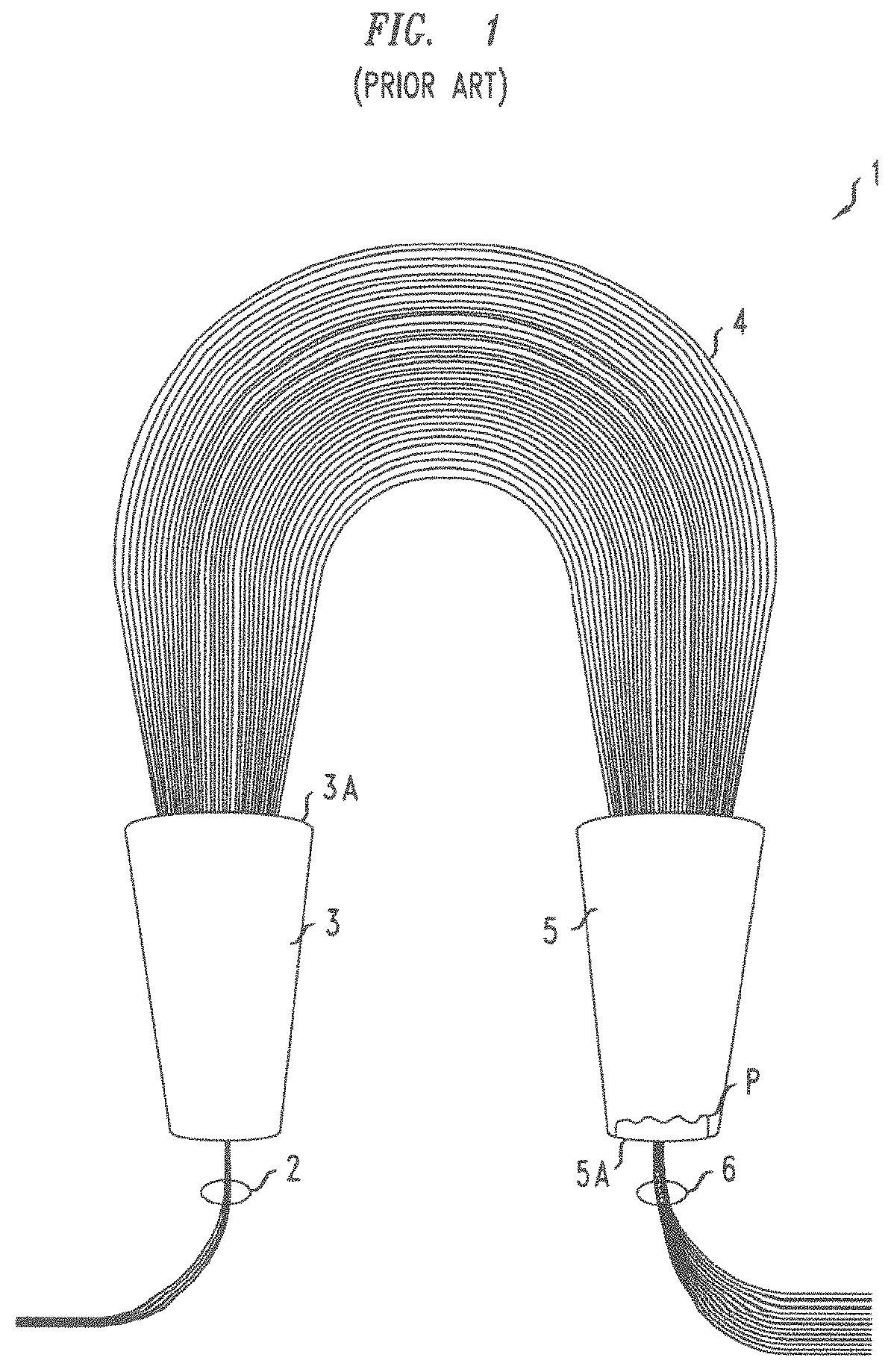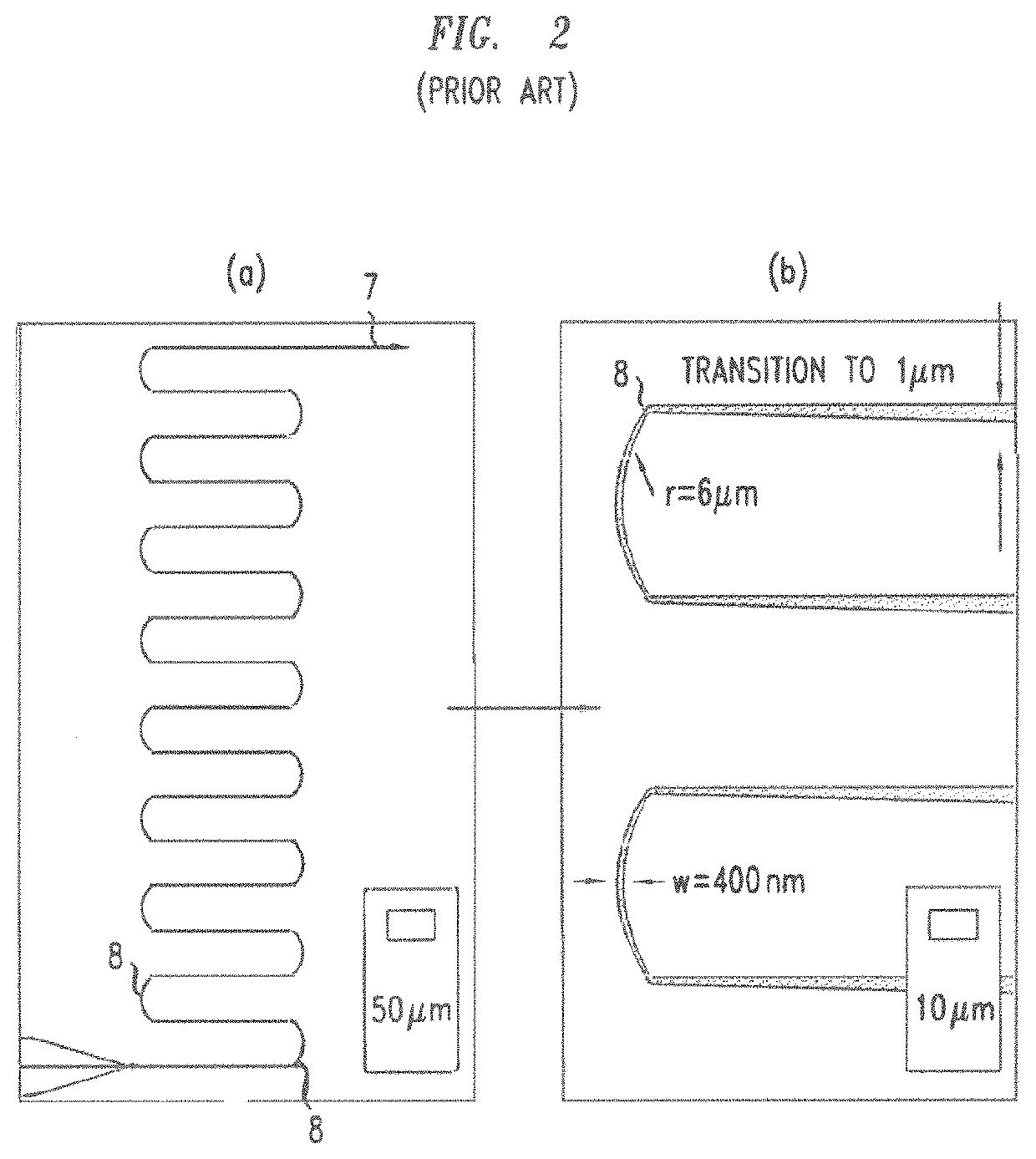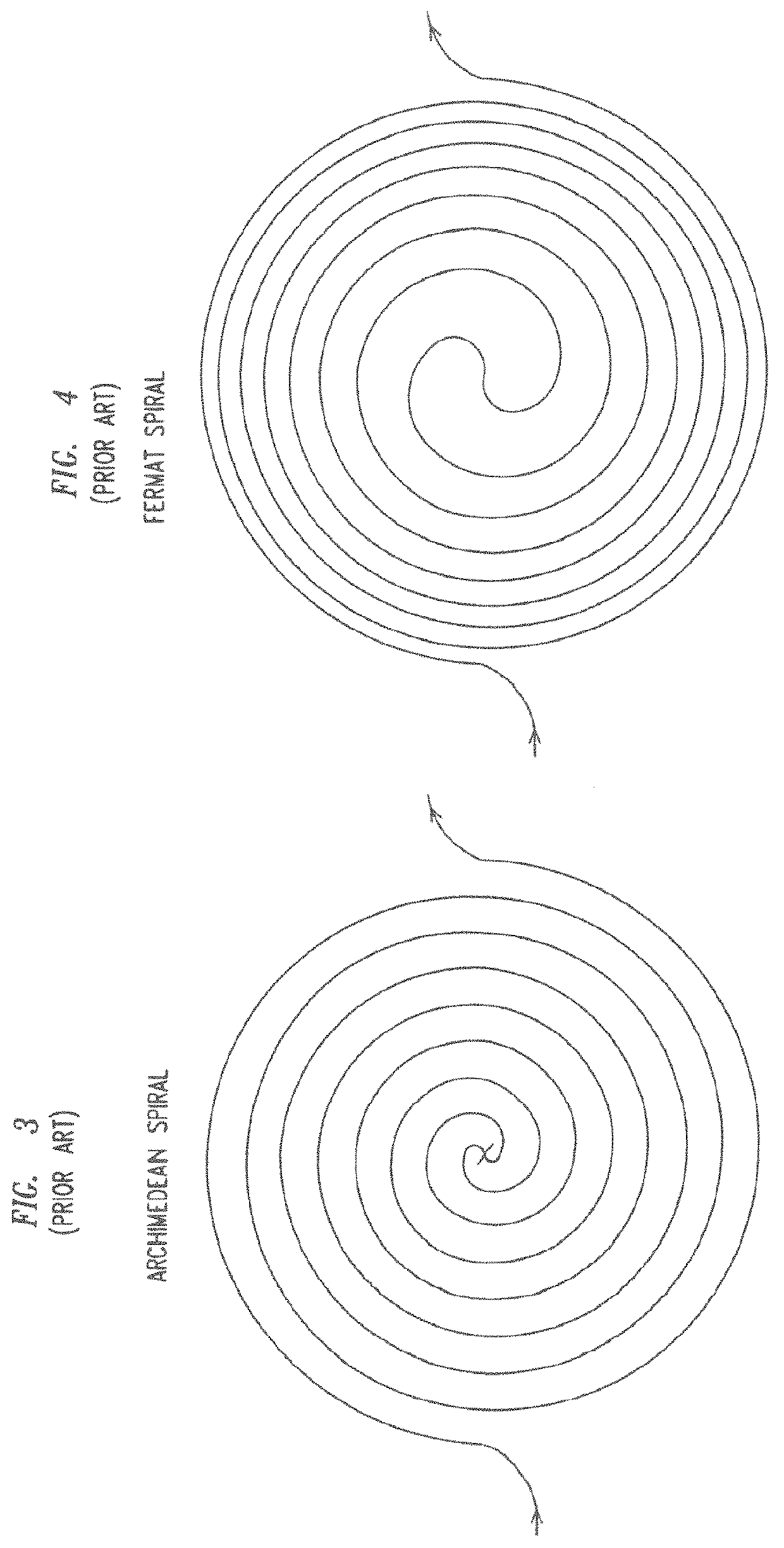High density optical waveguide using hybrid spiral pattern
a hybrid spiral pattern and high-density technology, applied in the direction of optical waveguide light guide, optical light guide, instrument, etc., can solve the problems of large waveguide fabricated in this platform, inability to bend around a tight curve without creating significant optical signal loss, and the resultant size of the device quickly grows
- Summary
- Abstract
- Description
- Claims
- Application Information
AI Technical Summary
Benefits of technology
Problems solved by technology
Method used
Image
Examples
Embodiment Construction
[0027]As mentioned above, it is frequently desirable to be able to reduce the physical size of an AWG, either to be able to fit more functions on a chip or to fabricate smaller chips. There are physical limits on how small a conventional AWG can be made, however, since waveguide curves must be made gentle enough to maintain their guiding properties. A significant amount of space is also consumed by the input and output waveguides, which must fan-in or fan-out to direct the light to or from the edges of the chip.
[0028]FIG. 1 illustrates the layout of a conventional AWG. It comprises a substrate (“die”, “chip”) 1 supporting one or more input optical waveguides 2 delivering optical energy into an “input slab” region 3. The slab region is a planar waveguide which confines the input optical energy in only the vertical dimension; the energy is permitted to spread transversely without restriction. The input slab is sometimes referred to as an “input free space region”, or an “input free pr...
PUM
 Login to View More
Login to View More Abstract
Description
Claims
Application Information
 Login to View More
Login to View More - R&D
- Intellectual Property
- Life Sciences
- Materials
- Tech Scout
- Unparalleled Data Quality
- Higher Quality Content
- 60% Fewer Hallucinations
Browse by: Latest US Patents, China's latest patents, Technical Efficacy Thesaurus, Application Domain, Technology Topic, Popular Technical Reports.
© 2025 PatSnap. All rights reserved.Legal|Privacy policy|Modern Slavery Act Transparency Statement|Sitemap|About US| Contact US: help@patsnap.com



